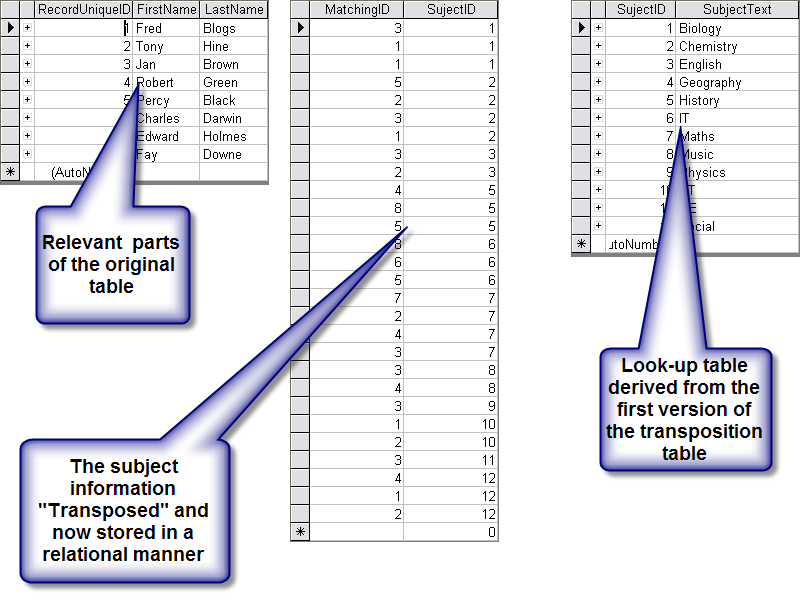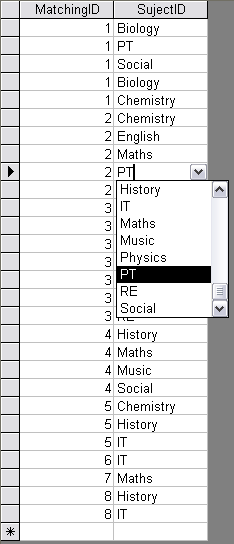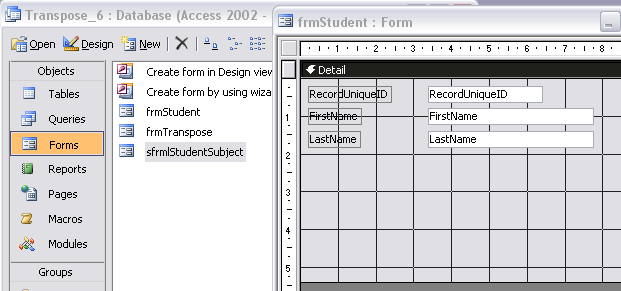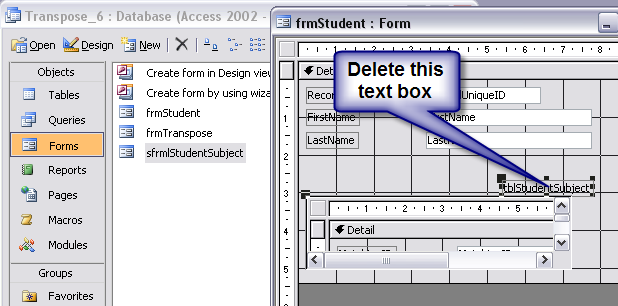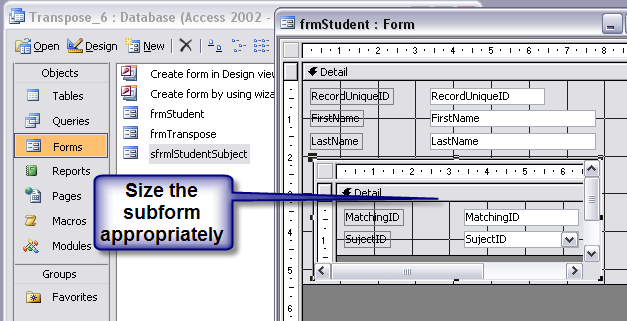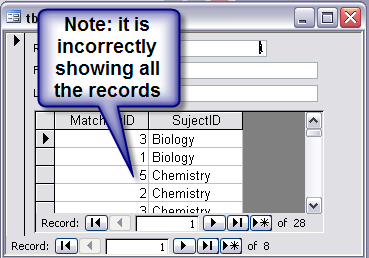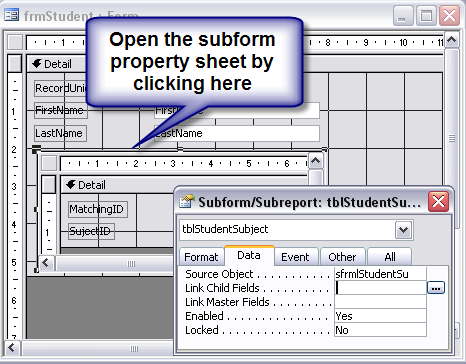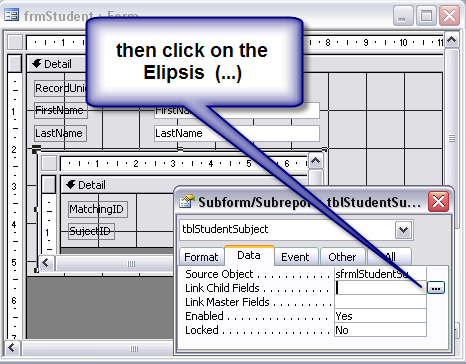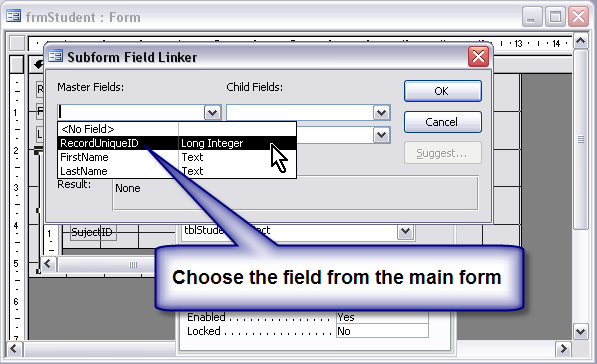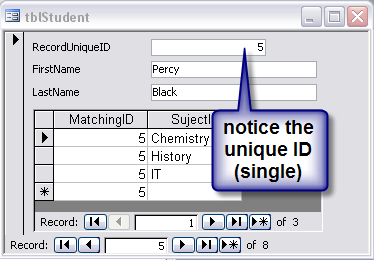Excel in Access (Part 3)
Using the normalization form we converted part of a spreadsheet type table into the beginnings of a relational table. From this table we derived a “look up table” now giving us a total of three tables, the remains of the first table, “tblStudent” (the student names), the next table “tblStudentSubject” stores the subject(s) related to each student, and finally a third table, “tblSubject” a “look-up table” to store the actual subject description.
Form based on Students List
Now all we need do is combine this datasheet view form with a form based on the students list, and this will give us a form for correctly displaying the student names and the subject(S) the student is taking in one Form: Using the wizard create a basic form from the student table and name it “frmStudent” arrange its size so it has some open space as shown.
Drag the subform “sfrmlStudentSubject” into the clear area on the student form “frmStudent”
Grab the highlighted subform:- “sfrmStudentSubject” Drag it over onto the form:- “frmStudent” where it will be added as a subform. This means it will be added within a subform/subreport control. Subform/subreport Controls are one of the advanced features that make MS Access superior to anything else!
You may wish to delete the text box, you don’t have to but I usually find it looks better without it.
You can either change the text in the textbox to something more descriptive. Alternatively, you can delete the text box, it’s up to you!
Size the Form to Suit
When you are in edit mode the subform looks like a single form with text fields in it. You have elected to make the form display in datasheet view so that it looks more like a spreadsheet and lists the matching records. You will need to size the subform/subreport control, the control containing the form, so that it looks correct. It’s a judgement call, I can’t help you with that…
Note:- Showing the WRONG Records!!!
Now save the form and have a look, you will notice that it incorrectly shows all of the records in the subform. This is because there are no restrictions on the records being shown. You add the restriction by setting up the parent-child link between the form and sub form. This will restrict the records to just show the ones that are related to the record on the main form, the parent form…
Open the Subform Property Sheet
The next bit is tricky, for two reasons, the form isn’t really on top of the other form, it actually sits in a subform window (correct name Subform/Subreport Control) and you need to gain access to the properties of this “subform window” by clicking on the tiny line that you can just see around your subform. This can be a difficult task to master first time. However there is an easy way to do this! Give me a shout, and I’ll tell you!
Now open the “subform field linker” dialog box by clicking on the ellipsis (…)
The master form ID and the subform ID(s) now match.
Single record ID in the main form/parent form. Multiple record IDs in the child form/Subform, where the records match (are related to the record in the parent form/ Main Form.
… …

